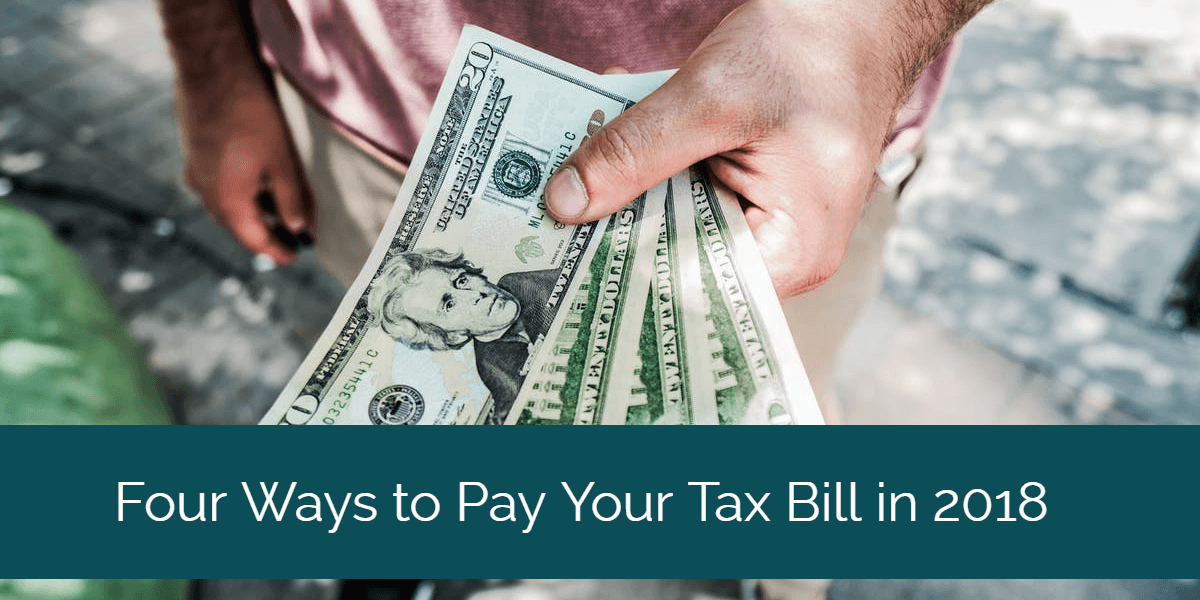
One of the biggest transitions between life in the 9-to-5 and life as a small business owner is how you feel around tax time. No matter how crummy your corporate job might have been, you can't deny it felt good to get a few hundred dollars back in tax refund every spring. In contrast, the majority of small business owners don't receive any such thing. Basically, we just owe money. And sometimes, we end up owing more money than we planned for.
While there can be an instinct to run and hide your head in the sand when a tax bill comes, the reality is that you’re way better off facing it head-on. Paying your tax bill on time means avoiding penalties and interest; not paying your tax bill on time is just racking up even more funds that you have to turn over to Uncle Sam.
Fortunately, there are several ways to go about paying off an unexpected tax bill. (Or even one that you should have expected, but didn’t plan around.)
Pay your tax bill in full, right away.
There’s no getting around the fact that you’ll save the most money if you can pay off your tax bill right away. Some people recommend even using a credit card or getting a loan in order to immediately pay the tax bill. Depending on your situation, that might make sense—on the other hand, you might be better off using one of the following approaches below. Talk with your CPA to decide which option makes sense for you.
If you can’t pay your tax bill in full, you should pay as much as you can, in order to reduce the interest and penalties charged for late payment.
Get a short-term extension
If you can pay off your tax bill in 120 or less, the IRS may be willing to give you a little extra time. You can apply for an extension online at IRS.gov, or call the phone number listed on the tax bill you’ve received. There is usually no set-up fee for a short-term extension, but make sure to ask about it.
Apply for a monthly payment plan
Those with a tax bill of $50,000 or less can apply for an Online Payment Agreement on IRS.gov. The best option is to use a direct debit payment plan. In addition to having a lower set-up fee, it’s less stressful—there are no reminders, no missed payments and no checks to write and mail. Look for Form 9465, the Installment Agreement Request, to apply.
Consider an Offer in Compromise
If you can prove that full payment of your tax bill is impossible, or that it will cause a financial hardship, you can see if you qualify for an Offer in Compromise. The OIC is basically a negotiated agreement between you and the IRS that lets you pay less than the amount they say you owe. It’s based on the most amount of money the IRS thinks they can expect to collect from you in the shortest period of time.
To qualify for an OIC, you must offer the IRS a minimum of 20% of what you owe, and the balance within five months or five payments—the longest repayment period the IRS will consider is 24 months. An OIC doesn’t affect your credit, but there is a fee to apply, and there’s a fair amount of paperwork involved. Also, as you might imagine, the IRS doesn’t grant these OICs easily, and it’s not open to just any offer you might make. (Typically they accept fewer than half the applications.)
On the other hand, they also don’t tend to like extended tax bill payment plans, since people tend to default. You can use the IRS’ online OIC Pre-Qualifier tool to see if you qualify, and to find out what a reasonable offer might be in your situation.
Note that you may encounter ads from attorneys offering to help you negotiate a better OIC deal. Beware of these offers—they tend to be shady. If you do pursue an OIC, work with a knowledgeable CPA so that you can present your situation accurately and confidently.
The Bottom Line
Remember, the worst thing you can do with a big tax bill is get scared and run away from it. By facing the situation and working with a knowledgeable CPA, you can create a plan that lets you keep your business afloat while staying on the right side of the IRS.
